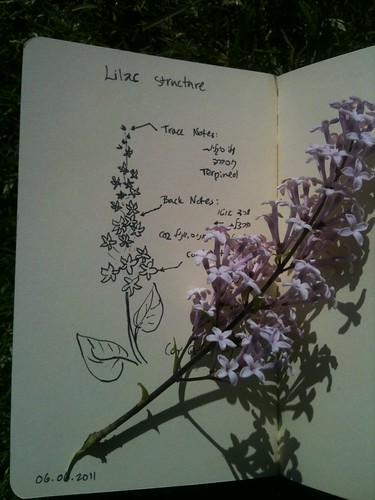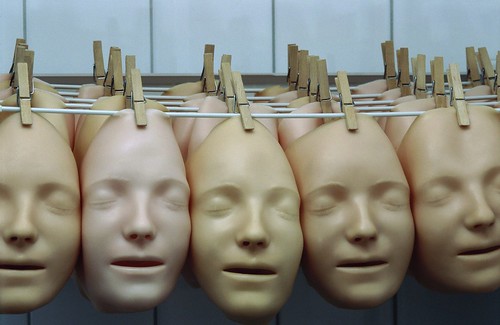Lilac Structure
Enjoying the very last blossoms of lilacs around town for me thinking, yet again, about structure. Trying to build a lilac perfume from natural materials only is probably impossible using complex aromatics such as direct extractions and distillations (i.e.: essential oils, absolutes, etc.). If I were to use isolates, this would be a lot easier - terpineol is the main molecule that makes lilac smell like lilac, and the other notes serve as a backdrop to enrich that characteristics. According to Poucher's profiling of lilac, it only takes terpineol, plus an artificial lily and heliotrope bases a touch of rose and jasmine essences to create a true lilac scent. He uses the word "back notes" to describe the role of heliotrope and rose and lily in the fresh lilac flower scent. And this got me thinking about the lilac structure. It can be illustrated like the flower itself - with the core notes, or the main ones being those that give it the character (which I drew on the very bottom part - the larger blossoms on the lilac stems), with the "back notes" - i.e. the nuances that give the lilac its richness, acting like a backdrop for the most dominant notes; and lastly - the trace notes, which are the unopened buds on the lilac stem.
Do not confuse between top notes, heart notes and base notes and the trace notes, back notes and core notes. Some of the core notes can be base, some can be heart and some can be top notes. It has nothing to do with volatility, but with the olfactory structure of the perfume, of what's dominant and determines the character, and what's just an added nuance. As in the case of lilac - while there are three main "floral bases" in the back notes, the heliotrope, for example, will require heliotropin (a base note) as well as some anise (a top note).
It's quite abstract and conceptual to think about structure in perfumery, and visuals do help. What I find most fascinating, is how the shapes in the natural world correspond so well with the other chracteristics of the plant. It's difficult to me to describe the "shape" of the smell of lilac, but the shape flower itself makes it self-explanatory. The smell of lilac is as fluffy, delicate, airy, heady (pointing upwards like the clusters of flowers) and with some main characteristics notes backed up by olfactory nuances that play supporting roles in this lilac show.



